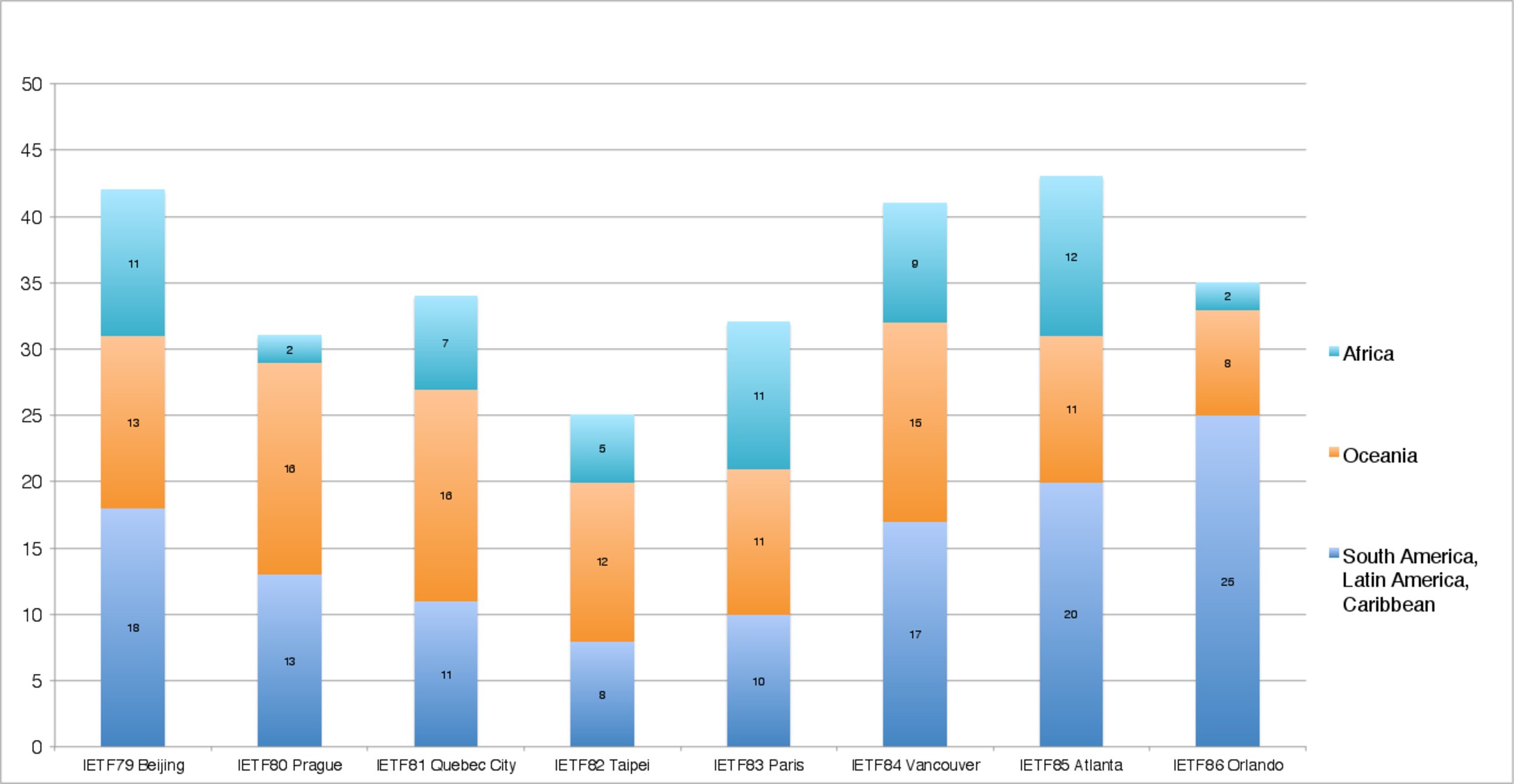Filter by topic and date
Diversity
- Jari Arkko IETF Chair
17 Apr 2013
Diversity has been a recent big discussion topic at the IETF. Many of us have participated in this discussion, but I also wanted to bring it up here in the blog.
Hoping for bigger involvement from different areas of the world or more equal participation from both genders is not new. The IETF is affected by typical IT field demographics, industry trends, and geographic growth areas.
But we are starting to realise that improvements are necessary. The IETF can benefit of untapped potential and bring even more energy to the work. We can broaden our perspective, making sure that we understand the requirements for Internet technology from everybody, and then share it with the rest of the world.
We think of diversity as something that covers international participation, different cultures, gender, age, organisational background, and so on. While I am very proud of the IETF as a very international organisation – with participants from 60 countries working on documents, for instance — there are many aspects of diversity where we could do much better. Overall participation is concentrated in some areas of the world, with little participation from Africa and South America, for instance. Similarly, while the IETF has some very active female participants and leadership members, the numbers are very small. Much of the work in the IETF is driven by large networking companies, yet academia and small companies would have more to give, and operational experience from additional operators would be similarly appreciated. Importantly, these disparities appear most prominently in our leadership, where institutional and structural issues can lead to even less diversity along all of the above mentioned axes than in our general population. All organisations benefit from a healthy influx of new participants at all levels, and in the IETF we need that to balance our well-established topics and participants, to build the next generation technologies, experts, and leaders.
In April we created a design team to look at the topic, and make some suggestions for improvements. The announcement is here; Kathleen Moriarty and Suresh Krishnan are heading the team. Please contact them if you are interested in helping. I have given them an open assignment, with a desire to get advice on what steps we could take to increase participation in various aspects of the IETF, hoping for some initial advice before the next IETF. The design team will present their recommendations to the community, and engage in the discussion. Recommendations with community support will be taken forward.
The diversity team is a design team tasked with understanding the issues we are facing, drawing in experience from other organizations affected by similar issues, identifying obstacles to us having the widest breadth of talented participants and leaders, and making practical recommendations that could help us improve the situation. It is understood that many improvements may only take effect long-term, such as drawing in more participants from areas of the world where the IETF has traditionally not had much participation. Nevertheless, a set of actionable steps would be useful.
In addition to the design team, we are also working actively on other improvements. For instance, there is an independent effort in looking at improvements in mentoring.
You may think that while all the above are laudable goals but doing something in practice is difficult. I agree that this will not be easy. No one should expect a revolution. I do not have an idea about what to do about some of the issues. But still, I think we know some of the things we can do, and incremental progress is important. Speaking of incremental progress, I’m pleased that participation from South America seems to be on the rise:

Is there something we could do to bring participation even more up from this? Could we extend the excellent ISOC fellowship program? Are there volunteer IETF people who could speak at select events in the area? Could we look at a meeting in that region, some years into the future? None of these actions make sense alone, but perhaps taken together we might have an end result where South America’s participation gets to a state where it perhaps should be, given the importance of networking for them as well as to the rest of the world?
We may also need goals to reach for. I personally would like to see a yearly increase in the diversity of our leadership at the WG level or higher. And in the next two years, I’d like to make decision about a future meeting outside our traditional North American, European, and Asian areas within the next two years. With growing local participation levels that justify choosing such a location. Doable? I certainly hope so.
In the coming months I hope that we have results from the design team, have better mentoring programs, have worked with ISOC on goals for various outreach programs, and have a better understanding of what it would take to meet outside our traditional regions. But I am not trying to pretend that we have all answers right now. What do you think we should do?
In summary, the issue of diversity and how we address it in the IETF is important for two reasons. First, more diverse participation will provide greater energy and insight to the central IETF activity of producing relevant, technically-excellent standards that help make the global Internet work better and continue to grow. Second, it is important to consider this matter in consistency with the principles of open processes and community input, that are key to the IETF.
P.S. Thank you Alissa Cooper, Greg Wood, Kathleen Moriarty, Pete Resnick, Barry Leiba and many others for feedback on some of the aspects discussed in this post. Credits for the participation graphic go to Bob Hinden.